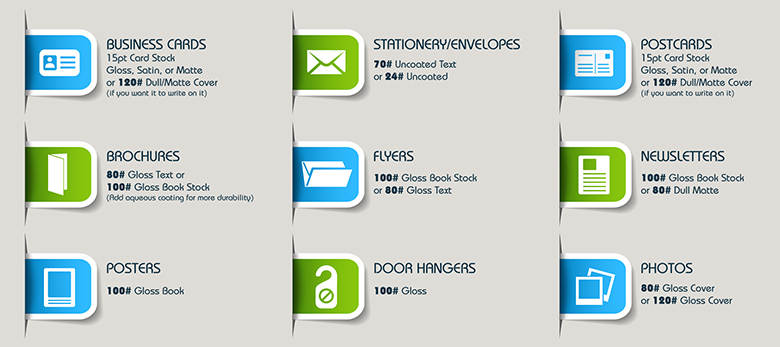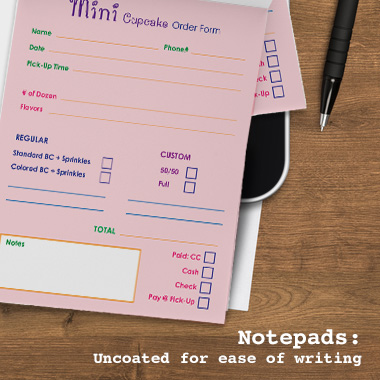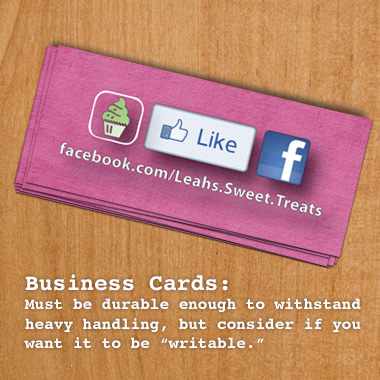
You never get a second chance to make a first impression. While the origin of this bit of wisdom is unclear—“experts” have attributed it to Oscar Wilde, Mark Twain and Will Rogers—it’s a statement that should be ever present in the minds of small business owners, especially as it pertains to their print marketing projects. The right paper is essential to a great first (or second, third or fourth) impression.
Unfortunately, choosing the ideal paper is nothing if not confusing. There are literally hundreds of options available, and small business owners often end up making the wrong selection because they don’t understand the industry jargon.
This article aims to put an end to that. Read on for the ultimate simplification of the basics along with best practices you can use to change your print projects for the better.
But first, let’s review some essential vocabulary
Choosing the right paper for your print project would be easier if manufacturers would stick to one definition to describe the weight of their product. Unfortunately, that’s just not the case.

Paper coating:
Coated – Coated paper has a waxy finish (shiny or matte). Coated papers are available in a gloss, silk (sometimes called satin) or matt finish and are used for projects requiring a fine finish. Coated paper can give the printed piece a classier look. Note: Do not use gloss if your product will be used for note-taking. Gloss finish is very difficult to write on.
Types of coating:


Uncoated – This paper has an untreated surface-resulting in a dull and unreflective look. Uncoated paper is typically used for letterhead, envelopes, and notepads. Premium uncoated paper can also be used to provide an earthier, more personal feel for important Invitations, Announcements, and Thank You cards.
The ink used to print your marketing piece will appear differently depending on the finish of your paper.


Getting Specific:Common Paper types and uses
80# Gloss TextThis is standard glossy paper stock, about as thick as a light magazine cover. The shiny finish provides an excellent opaque base for rich process color printing. This is a very popular stock for brochure printing, catalog Inserts, flyers, posters, etc.
80# Gloss CoverAs a “cover” stock, this paper is stiff, about like a postcard or baseball card. This stock is coated with a glossy finish, making photographs and other images look beautiful. Standard uses: durable, heavy-weight Brochures, Catalog Covers, Product Spec Sheets.
80# Dull/Matte TextThis stock is finely coated with a non-gloss finish. It provides an excellent opaque base for easy to read, crisp typography. Standard Uses: Brochures, Newsletters, Catalog Inserts, and Flyers, etc.
80# Dull/Matte CoverMost dull/matte cover is a typically around a 9 PT cover stock with a smooth, non-shiny coating. It is well suited for detailed, crisp printing without sacrificing the ability to easily write on the paper. Often selected with the 80# dull/matte text option for inside your catalog or booklet piece.
100# Gloss TextSimilar to the 80# gloss text, but 25% thicker and heavier, for a more substantial feeling piece. Standard uses: Brochures, Information Sheets, Direct mail pieces, Posters, Door Hangers, etc.
100# Dull/Matte TextThicker and heavier than 80# Dull/Matte text for a more substantial feeling piece. Provides a non-glossy, opaque base for detailed, crisp printing.
100# Uncoated CoverAn option for business cards, rack cards and bookmarks. This is smooth and typically around 14 PT in thickness.
110# Uncoated MatteThis paper is often referred to as card stock. This is a great choice when you want the details on your invitations to look crisp and clear, or when your postcards need to withstand a bit of abuse.
120# Gloss Cover
This has a high quality look. It is a glossy, coated finish to make photographs and other images look beautiful. Aqueous coating can be added for an even more protection and shine.
120# Dull/Matte CoverThis typically has a smooth, non-shiny coating. It is well suited for detailed, crisp printing without sacrificing the ability to easily write on the paper. An excellent choice for Business Cards, Postcards, Note Cards and Greeting Cards.
70# Uncoated TextThis is typically used for stationery, envelopes and newsletters. Many common stationery stocks are not optimized for 4-color printing. This paper feels substantial, and is the best type of uncoated paper stock available for full-color printing.
24# Uncoated and 28# UncoatedThis is a standard stock commonly used for envelopes, also called White Wove. The 28# is thicker and heavier than the 24#.
Magnet Stock or Magnetic PaperUsually thicker- it should deliver high quality printing with excellent color reproduction and will stick to most metal surfaces. It’s a great choice for business cards, postcards, coupons, calendars, sport schedules, and menus.
Sign Up For Overnight Prints Newsletter: